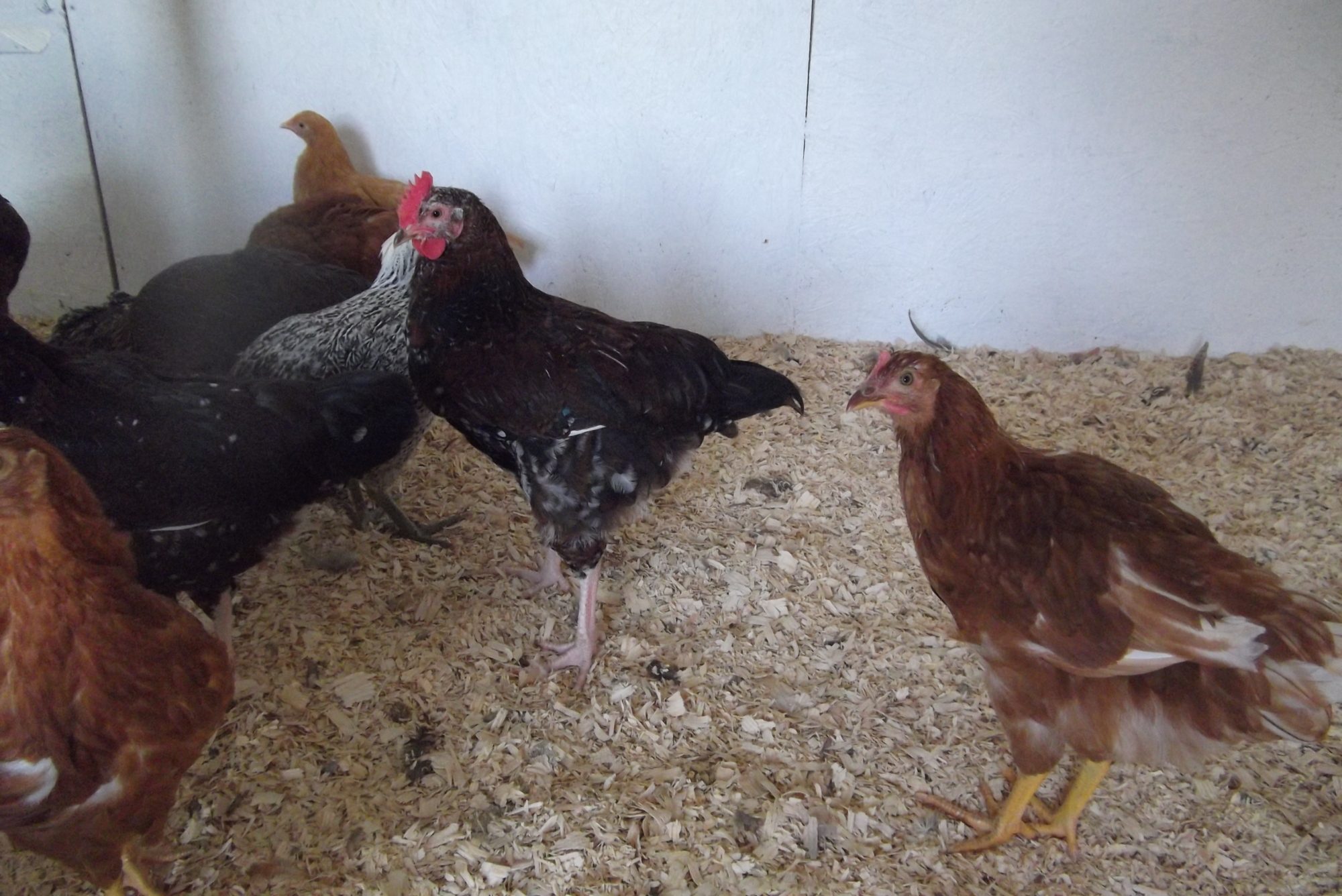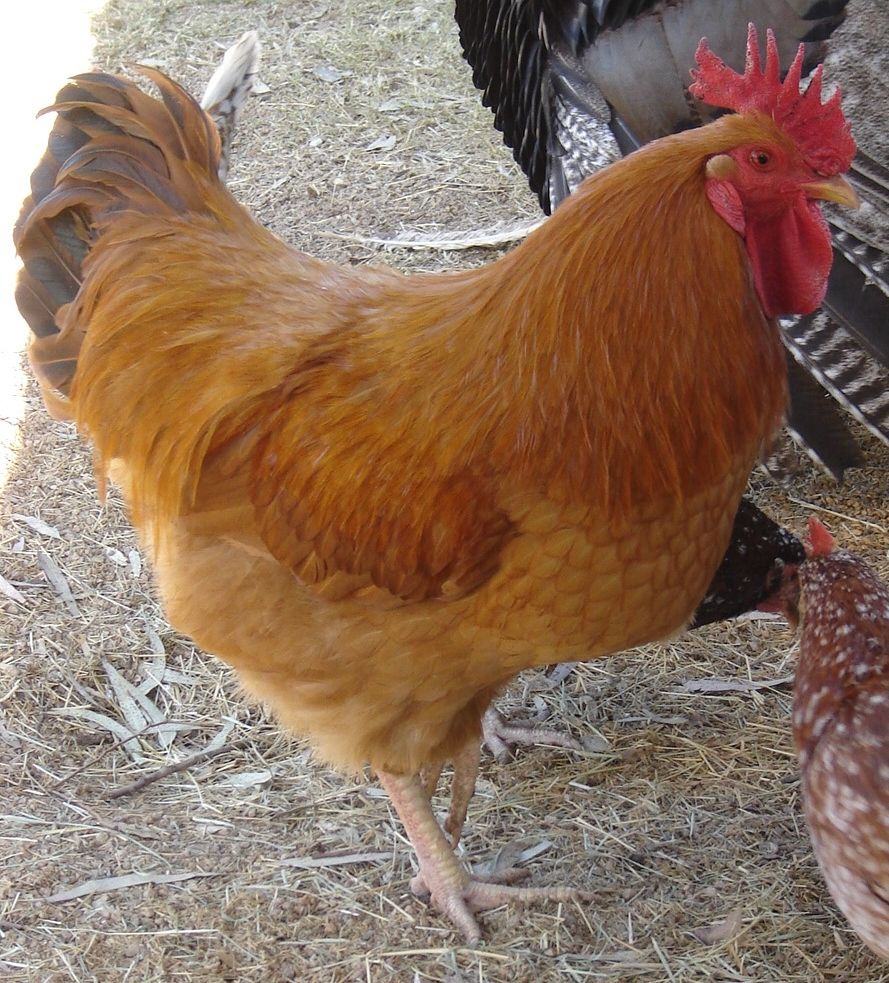I've had a terrible time getting these pics uploaded. Hopefully, I've got the problem solved this time. This guy is the current flock leader and my favorite roo for body type.

Check out that stance. Is it just me or is this a really handsome rooster? Look at that tail. This guy is all about the girls. He looks after them, scolds them if they bicker, calls them to the coop if he thinks something's not right and roosts on the very top roost, watching out the window for any trouble. He's friendly enough but on a mission!

This is my favorite roo for color. He's #2 roo in the flock. He looks like someone dripped white paint on his back. He's a really friendly roo also.

I did a poor job of taking pictures but you can see his back a little better here.

Here's one of my pretty girls. See how the spots are just now showing up on her back.

This is a general population shot. More white paint splashed around. Since this has just started showing up I hope it keeps coming!

Overall, Roo #2 has the most white and there is one other roo that could be his twin. The girls are more spotty than shows up in the pic with only the larger spots showing but they are coming along. The pullet in the lower center has tons of white coming in from her head to shoulders but it's really small and doesn't show up in the photo. I need a better camera! Or a better operator, not sure which but have some idea.
Ignore the Red Stars, they will be separated from the breeders. Same thing with the EE's. I'm still waiting to see who comes up with the best white before culling any more of the SSX. I only culled the smallest, drabbest birds but they didn't live through the transition to their new place.
 Touchy, touchy, touchy.
Touchy, touchy, touchy.

Check out that stance. Is it just me or is this a really handsome rooster? Look at that tail. This guy is all about the girls. He looks after them, scolds them if they bicker, calls them to the coop if he thinks something's not right and roosts on the very top roost, watching out the window for any trouble. He's friendly enough but on a mission!

This is my favorite roo for color. He's #2 roo in the flock. He looks like someone dripped white paint on his back. He's a really friendly roo also.

I did a poor job of taking pictures but you can see his back a little better here.

Here's one of my pretty girls. See how the spots are just now showing up on her back.

This is a general population shot. More white paint splashed around. Since this has just started showing up I hope it keeps coming!

Overall, Roo #2 has the most white and there is one other roo that could be his twin. The girls are more spotty than shows up in the pic with only the larger spots showing but they are coming along. The pullet in the lower center has tons of white coming in from her head to shoulders but it's really small and doesn't show up in the photo. I need a better camera! Or a better operator, not sure which but have some idea.
Ignore the Red Stars, they will be separated from the breeders. Same thing with the EE's. I'm still waiting to see who comes up with the best white before culling any more of the SSX. I only culled the smallest, drabbest birds but they didn't live through the transition to their new place.











